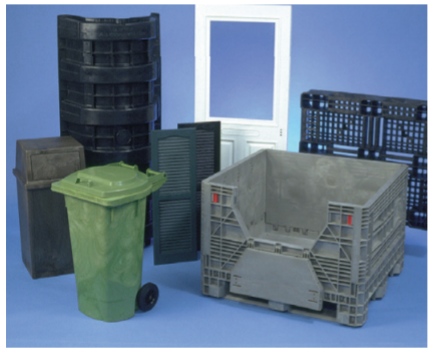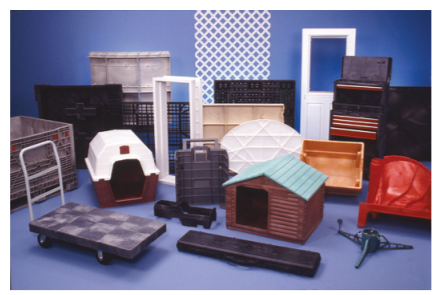
Injection Parts – The Structural Foam Process is a low pressure injection molding process where an inert gas is introduced into melted polymer for the purpose of reducing density and hence weight of the finished product.
Structural foam molded products have cellular cores surrounded by rigid, integral skins. Foaming agent (NI, CO2 or CBA) is introduced into the polymer melt stream, creating a homogenous mixture of polymer and gas.
The mixture is short-shot injected through nozzles into the mold in a volume that is less than the amount required to mold a solid part. Injection pressure and expansion of the polymer/gas mixture fills the mold.
A porous skin is formed when the melt contacts the cold surface of the mold. The expanding polymer/gas mixture forms the cellular core.

The expanding gas provides the final pack and hold pressure. Once the plastic gas mixture enters the mold cavity, the gas expands (i.e. foams), filling the cavity and forming cellular structures within the part. The finished part is typically 10 – 30% less weight than an equivalent solid part.
Advantages over alternative methods – Injection Foam Process
- Part weight reduced 10% to 30%
- Density Reduction, hence resin savings
- Low cost N2 or CO2 – much less expensive than chemical blowing agents (CBA’s)
- Large part molding with low clamp force requirements
- Mold Cavity Pressure; typically 200 – 600 psi ( 14 -41 Bar )
- Lower energy costs vs. other IM processes
- Lower cost aluminum molds vs. high pressure IM machines
- Faster cycles due to better heat transfer of aluminum
- Thick wall parts from 0.125″ – 0.500″ ( 3 – 12 mm )
- Stiffer parts at the same weight as IM as a result of cellular foam structure
- Complex parts without sink marks
- Higher impact strength than thinner wall IM
- Parts can be sawn, screwed, nailed or stapled like wood

